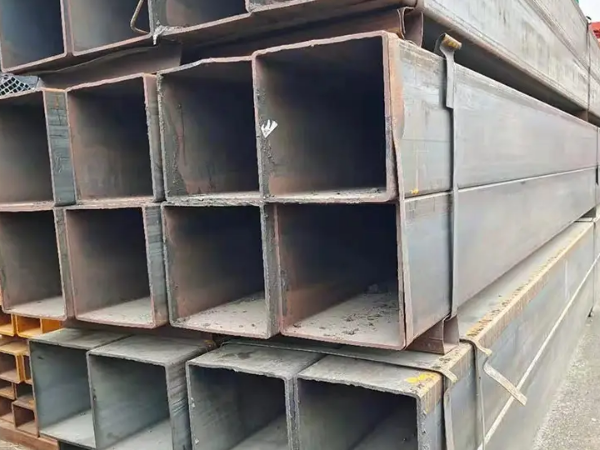Cleaning Process of Rectangular Tube
Date:2022-04-22View:1651Tags:Rectangular Tube
Rectangular tubes are widely used in daily life, and they have become a part of people's daily life. How to clean the surface of rectangular tubes when they are stained?
There are often some wastes such as automobile oil and dust on the surface of the rectangular tube, which will affect its quality. Therefore, it is very necessary to clean the rectangular tube. The cleaning methods generally include caustic soda solution cleaning, caustic soda solution immersion, electrolytic cleaning, boiling water immersion, etc. These cleaning methods can control the total content of animal and vegetable oils and carbon residues on the surface of the rectangular tube to a certain extent, and cleaning will also affect the surface. Terminate grinding to develop surface adhesion.

The method of removing the oil stain on the surface of the rectangular tube:
1. Use solvent cleaning agent to dissolve soapy feet and unsaponified oil to remove oil stains. Common solvents are alcohol, gasoline for cleaning vehicles, xylene, carbon tetrachloride, trichloroethylene, etc.
Among them, the more reasonable organic solvents are carbon tetrachloride and trichloroethylene, which are not easy to ignite and can be used for degreasing at higher temperatures. It should be noted that in the process of removing solvent oil, it is also necessary to remove filler oil.
When the organic solvent evaporates on the surface of the rectangular tube, the thin film can be removed by alkaline washing and photoelectric catalytic deoiling.
2. Negative degreasing is often used in photocatalytic cleaning, or anode replacement is used to remove oil. Electrochemical corrosion using Radon dissolved on anodized negative electrodes or CO2, based on an aqueous mixing mechanical device on the surface of a rectangular tube, to facilitate the removal of oily metal surfaces.
In addition, the continuous exchange of the aqueous solution is beneficial to the saponification reaction and emulsification of oil stains, and the remaining oil stains are removed from the metal surface under the harm of continuous dissolved air bubbles. However, during the whole process of degreasing the anode, Radon penetrated into the metal material, resulting in hydrogen embrittlement. In general, anodes and anodizing are more suitable for degreasing than avoiding hydrogen embrittlement.
3. The cleaning method of caustic soda solution to clean the alkali causes oxidation, because the application is simple, the price is cheap, and the raw materials are easily available, which are widely used. Because the whole process is composed of several soaps, lotions and other caustic effects, with a separate base can be no more than characteristic. A variety of general application components sometimes require the addition of surfactant modifiers.
The pH level that determines the high saponification reaction is carried out, and the pH of the intermediate source enables the grease to reduce the interfacial tension of the aqueous solution of the emulsion to promote the grease. In addition, according to this caustic hand, the surface layer can be removed by the residual rectangular tube cleaner.
4. Surfactant cleaning uses surfactants with low interfacial tension, strong wettability and moisture, and strong emulsifying ability, which is a widely used degreasing method.
According to the emulsification of the surfactant, a surface film with a certain compressive strength is formed on the water-oil sheet, which changes the sheet state and disperses the oil particles in the solution to form an emulsion. Or depending on the solubility of the surfactant, the ability of the water-insoluble oil in the rectangular tube to dissolve the surfactant in the micelles is greater than the ability to transfer the oil into solution.

